AutoblogGreen recently got to sit down with Musk at SpaceX for a one-on-one, wide-ranging interview. Musk, comfortable and relaxed in an "Occupy Mars" t-shirt, was forthcoming about most things we asked – but questions about Tesla's upcoming Supercharger network of fast chargers, which can deliver so much more juice per minute than any other plug-in vehicle charger on the market, were deflected, since the company is planning a big announcement at the end of this month or early October – and we got into Tesla's financial situation, why the Model X has those falcon doors and how Daimler saved Tesla. We learned a lot, including that Musk really doesn't like the rear seat access in the Audi Q7. Not one bit.
Read the whole interview below.
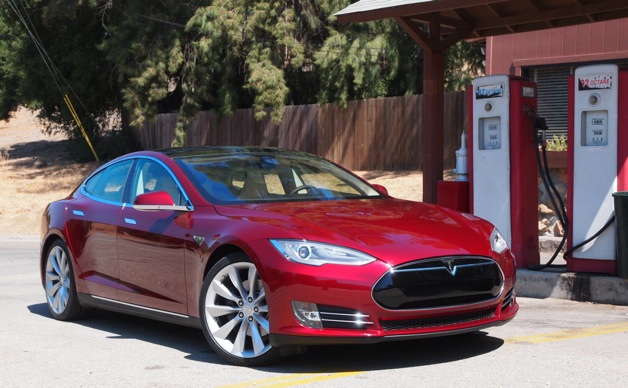
ABG: What's the biggest thing on your mind right now, with the Model S. George [Blankenship] wrote the post about 100 vehicles being produced, 74 for customers. Is that at the forefront or are you already looking at what you're going to do next?
Musk: Certainly, there's a little bit on the back burner with Model X and a few other things, but the company's central focus is on scaling up production of the Model S while trying to keep quality as perfect as possible, really trying to have every car that goes out the door be perfect. None of this, "J.D. Power found 80 defects" bullshit. Every car needs to be exactly right, and I am literally personally looking at every car at this point. I won't be able to do that long-term, but the cars are held up for shipment twice a week and usually on Tuesday or Wednesday I will look at every singe car and drive one or two at random and then on Saturday I'll do the same thing.Every Model S needs to be exactly right, and I am literally personally looking at every car at this point.
ABG: What does that process entail? Visual inspection, turning them on?
Musk: There is a visual inspection of the inside and outside, looking at fits and interior finish and often sitting inside and making sure that everything is put together correctly. Obviously, the software is always going to be the same, so I'm not trying to see if there's any variation there. And then, as I said, I pick cars at random to drive and make sure that the driving feel is correct and the sound system is working as it should and if there's an issue, I'll trace it back to the exact place on the line where that occurred. For example, yesterday I found that the installation of the headlamp was not quite correct and there was a slight asymmetry between the right and the left. I think most people wouldn't see it, but it seemed pretty obvious to me. So I was like, this doesn't seem right, this is off by like three millimeters. So I literally walked over to the lead tech on that portion of the line to find out why is this three millimeters wrong and it turned out he was still operating with the part dimensions of the old part, but we had made a new part that didn't require shimming and nobody had given him the new instructions that it no longer needed shimming to get to the right position. And that was the origin of the problem. On Saturday, I will talk to the whole assembly, metal stamping and plastics team to make sure that everybody understands that they are all empowered to be perfectionists on the line and that they should not let a car move from their station if they see anything that is slightly wrong. They must reverse the line and send it back to the prior station.
ABG: You're talking to them on Saturday. Are they working seven days a week?
Musk: Right now we're working six days a week. Some people are working seven days a week – I do – but for a lot of people, working seven days a week is not sustainable. The factory is operational seven days a week but most people we only ask to work six days a week right now and, obviously, we want to get that to a more reasonable number. I think people can sustain a 50-hour work week. I think that's a good work week. If you're joining Tesla, you're joining a company to work hard. We're not trying to sell you a bill of goods. If you can go work for another company and then maybe you can work a 40-hour work week. But if you work for Tesla, the minimum is really a 50-hour week and there are times when it'll be 60- to 80-hour weeks. If somebody is hourly, they receive time-and-a-half but if somebody is salary, then we do cash and stock bonuses for going above and beyond the call of duty. So we try to make it fair compensation, but the general understanding is that if you're at Tesla, you're choosing to be at the equivalent of Special Forces. There's the regular Army, and that's fine, but if you are working at Tesla, you're choosing to step up your game. And that has pluses and minuses. It's cool to be Special Forces, but it also means you're working your ass off. It's not for everyone.If you can go work for another company and then maybe you can work a 40-hour work week. But if you work for Tesla, the minimum is really a 50-hour week.
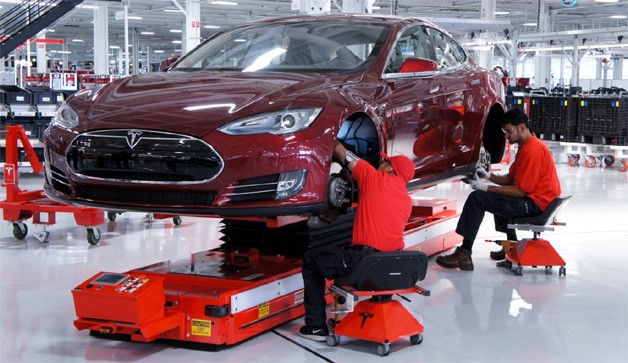
ABG: When you start building more and more Model S vehicles and hiring more people, will all of the factory staff be expected to step up?
Musk: Everyone. So we will only scale to the degree that we can hire people who are willing to do that. We're getting quite big, though. We're at almost 3,000 people, 2,800 or something.
ABG: Roughly how many – in percentage or raw numbers – Model S vehicles do you send back?
Musk: The issue is that we need to improve the communication update frequency. That person would have learned it, but he learned it maybe two days later and we would have had to fix a bunch more headlamps. He's a really good guy, and I was actually really impressed with his knowledge, he had it right down to the millimeter, but he just had the wrong instructions. So, the talk on Saturday is going to be: "Guys, don't follow instructions if they don't seem right. It doesn't matter how junior you are, if you just came out of school and are 22 years old. Whatever. If you're looking at something that doesn't seem right, it doesn't matter if you got those instructions from the vice president or from fricking me or whatever. You should say, hey, this doesn't seem right and this is why. If you're right, you're right and it's not about the position of the person, it's about the truth of the argument.
ABG: Going back to the number of cars, do you have a number if how many you've noticed?
Musk: I find things in almost every car.I find things wrong in almost every car.
ABG: Are they all worth sending back?
Musk: Yeah, absolutely.
ABG: So, pretty much every car you look at you send back?
Musk: I have corrections. (laughs) In the beginning, we have to be slightly imperfect because we don't have everything completely dialed but our aspiration is to get to cars that are accurate to the limit of reasonable physics. What I've told my teams is that we want our cars to be so accurate you could use them as a calibration device. So, if I want to know how long is a meter, oh, don't worry, I can go measure the car.
We're going to be ordering some laser calibration devices so we can literally calibrate the entire dimensions of the car within tenths of a millimeter. If it's wrong, let's trace it to the origin and fix it. This is very extreme for the car business, but for the rocket business this is not, so from my standpoint, when people say you can't do that, it's like, "I do that every day. What are you talking about? I know it's possible." We're trying to take the precision of rockets, where fractions of a millimeter can mean the difference between success and failure. We're applying rocket science to the car business, absolutely. If you want to make the best car, that's what you have to do.
ABG: Since you're so involved with the Model S at this stage, will it be hard to let go, as more and more cars get built?
Musk: As our rate steps up, it won't be possible for me to inspect every car, so then what I'll be doing is picking cars at random and inspecting those and then, if the sample group is sufficient and I'm not seeing any issues, then that means the most likely thing is the greater population is good, but [my involvement] is most important in the beginning because once we get instructions correct and the feedback loops in the system correct, then I think that pretty soon I won't be able to find issues.
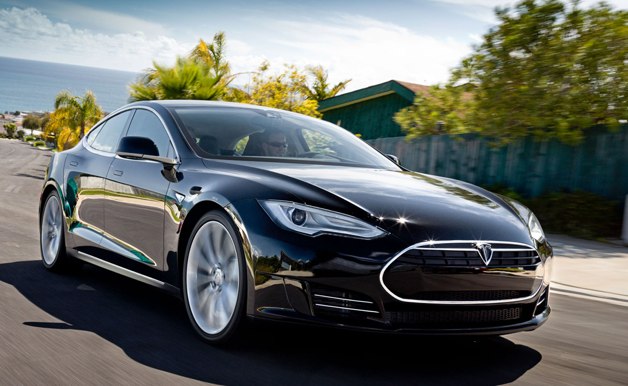
ABG: Have you had cars come back from customers, where you noticed a mistake and then realized that that problem had been sent out to someone and you wanted to replace it?
Musk: No. Our customers are more forgiving thus far than I am. They all think it's really great.
ABG: With all of this effort spent, I think legitimately, put into each of the early Model S vehicles, the time and money spent per vehicle is very high at this point –
Musk: It is, of course.
ABG: Do you have an idea of how long it will take for the Model S to become profitable? How many you'll need to make? Do you even expect to make money on the first generation?
Musk: Absolutely. There's no question that we have to make money on the Model S. We made money on the Roadster, as a product line by itself. We did actually reasonably well. I'm not sure what the lifetime gross margin is, but somewhere between 25 and 30 percent, which is quite good for the car business. If the Roadster was the only thing we did, then we could have achieved profitability, but we would be a much smaller company. The issue with going to the Model S is we're going from around 700 cars a year to 20,000 cars a year. It takes a better person than me to remain profitable if you're going to improve your volume by 30. That's 3,000 percent. There is a pretty massive investment required. We definitely need to make money. We need to repay the government loan. In fact, my goal is to repay that loan early. I actually feel pretty confident that we will be able to repay the loan early and I take that really seriously because, essentially, the U.S. people, through their intermediaries in Congress, has been kind enough to loan Tesla money and it is our absolute duty to repay that as soon as possible.There's no question that we have to make money on the Model S.
ABG: As you're well aware, that's definitely a hot political topic right now, the money that the government spent on advanced technologies.
Musk: I don't regard this as a political thing. I just think that we have an obligation to do right by them. People have made it a political thing, yes. I want to take the opportunity to clarify the nature of the loan, which a lot of people confuse with the bailouts, because they were occurring at approximately the same time. But, in fact, one of the requirements of the ATVMP [Advanced Technology Vehicles Manufacturing Loan Program] loan was that you demonstrate viability as a company in your own right, and that's why General Motors and Chrysler were not eligible because they were going through bankruptcy. I think there's a slight question about why Fisker was given the money, but whatever. (laughs) The value of the money was really as a catalyst. The DOE money did not, as many people think, save Tesla. That's not what occurred. The credit for saving Tesla should go to Daimler. It was the Daimler investment that saved Tesla in early 2009. We didn't get any DOE money until almost a year later. Around March 2010 was the first time we got DOE money, and the DOE money was specifically for Model S-related activity and moreover, had to be audited by [Price Waterhouse Cooper] and then we have to submit audited statements after having paid people. It's not like we could pay money in advance. We had to pay suppliers and then get an invoice and then PWC would check that the invoice was correct and applied only to the Model S program and then we would get reimbursed, so there was a three-month gap between when money was spent and we would get reimbursed for it. So it was impossible to consider it a bailout for Tesla. If we'd needed money to be bailed out the Roadster, we've have been screwed.One of the requirements of the ATVMP loan was that you demonstrate viability as a company. That's why General Motors and Chrysler were not eligible. I think there's a slight question about why Fisker was given the money, but whatever.
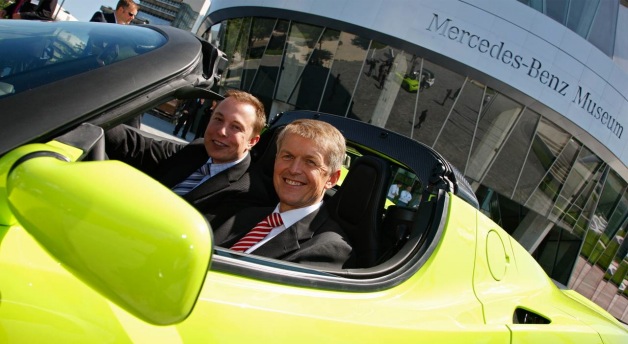
ABG: That leads to my next question, which is that especially start-ups, but every company walks that line on the edge of bankruptcy at certain times.
Musk: 2007 and 2008 were especially bad for us.
ABG: So that's the question, how close was that? Without Daimler, it probably would have stopped?
Musk: Extremely close. There were a couple of near-death situations. One is where I had to basically take all of my personal reserve capital in 2008 and invest that in Tesla. I literally had to borrow money for rent. And that's a whole saga that eventually should be told. It was a difficult thing that was made more difficult by one of our investors who was just an absolute bastard, nobody should ever take money from them. So I was totally tapped out. That was enough to get us through the second half of 2008 and into early 2009 and then, thankfully, Daimler, with whom we had a small deal to produce battery packs for the Smart [ED] actually invested $50 million into Tesla in the nick of time. It wasn't some huge altruistic gesture, but nonetheless, they had to have faith that their $50 million wouldn't go down the drain.There were a couple of near-death situations. One is where I had to basically take all of my personal reserve capital in 2008 and invest that in Tesla. I literally had to borrow money for rent.
ABG: At that time, did they know how in trouble Tesla was?
Musk: Yes. They had total access to our financials, sure.
ABG: Even with that they said this was worth it because they liked the technology?
Musk: Yeah. There was the potential to get an investment from another car company - not Toyota - but I don't know if they would have actually followed through or not, but they did express interest. I think Daimler was maybe aware of that. Either way, they put $50 million into Tesla at a time when they themselves were cash strapped. Dieter Zetsche had to go to Abu Dhabi and raise emergency cash for Daimler and then reserve $50 million for Tesla. When someone is hungry themselves and they give you a bit of food, you've got to be grateful for that.
ABG: What would you say is Tesla's financial situation now?
Musk: I actually think Tesla is in a pretty good position. In principle, if we raise no further funding, Tesla should be able to reach cash-flow breakeven, so that's kind of where we are right not. It's a public company, so you can see our financials. We've got a couple hundred million dollars. If we make a bunch of screw-ups, then we'll be in trouble, but if we execute reasonably well, then we'll be in good shape. As I mentioned in the last earnings call, we are considering doing a small financing round just to improve the cash cushion, just in case bad things happen, but hopefully that's money we'll never use. We might go something like that, but it's not yet approved by the board.
ABG: You've talked about the Karma, both today and recently in very clear statements and you can see how things can spiral out of control.
Musk: It's a bit ridiculous, because my opinion of Fisker and the Karma has not changed in the last two years. It's been exactly the same thing. Automobile just asked me for my opinion, it's not like I was volunteering it or sort of intentionally lobbing stones. If I'm asked a question, I try to give an honest account of how I feel. But a lot of people in the media treated it as if I, of my own accord, launched some missile at Fisker. It was part of a longer interview. This is really not news. This is an opinion that I've expressed in the past, but I guess there were a lot of people who were not aware.
ABG: Plus it's August...
Musk: It's a slow news day when Bloomberg reports that Tesla opened a service center in San Rafael. I mean, c'mon. It was on Google and Yahoo Finance that we were opening a service center in San Rafael. We're opening twenty.It's a slow news day when Bloomberg reports that Tesla opened a service center in San Rafael. I mean, c'mon.
ABG: Speaking of the media, so far, everything about the Model S, from the media who got to drive it at the launch to customers, has been entirely positive –
Musk: 99 percent positive.
ABG: Yeah. But the overwhelming message is that this is a great car, so wouldn't there be a great incentive to try to get even more people into the car?
Musk: Yeah, and we just did 5,000 test drives. That's pretty significant. But there is a shortage of cars. We need to provide cars to all of our stores for customer test drives, then we need cars for service, cars for endurance and quality and then we need to deliver cars to customers who have been waiting for a long time. So we just don't have a lot of cars to lend for days on end. We will do that, increasingly in the coming months. This is not in any way trying to hold back. We're trying to make each car as perfect as possible. Since each car is literally like 98 percent new. Usually, when people say it's the all-new blah-blah-blah, whatever car, that's bullshit. 40 percent of that car, if not 60 percent of that car, if coming from some parts bin. In our case, two percent is coming from the parts bin. There are some Mercedes components, like the steering column and the light switches and some of the internal bits but, literally, 98 percent is totally new, the components are in nothing else on earth. So, of the 98 percent new stuff, 90 percent of those components, no problem, we can scale up to high-volume immediately. Five of those are slightly problematic. Two percent are problematic and one percent are really problematic and causing us headaches. Putting it all together and making sure you assemble this incredibly complex puzzle in the right way, is tricky.
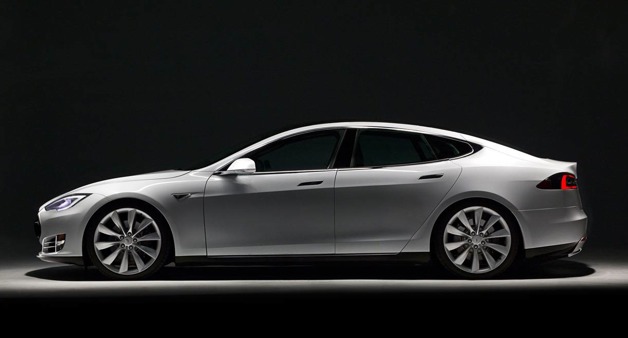
ABG: What are some of the parts on that one or two percent list?
Musk: Well, I don't want to get suppliers mad at me, but some of them are some pretty big name suppliers and you think, "How the heck can this big-name supplier not get their shit together?" and I call the CEO and he's like, "I promise I'll get my shit together," and I'm like, "Your shit is not together." It's quite vexing. In some cases, we've got some small suppliers where they're going their absolute best but we're asking them to do things they've never done before. One example is the bright molding around the window of the Model S. We have a continuous arc all the way to the back. It's really big. It goes all the way from the A pillar all the way across to the C pillar and then under. It's this huge, single piece part. If we did it like other manufacturers, we'd have seams, and seams suck and I was unwilling to have seams. So it was quite tricky to make that whole thing as one piece and then ship it and not have any warping or damage and then put it on in the right way. It's awesome, because it's the best bright molding of any car. Go and look at the bright molding on a BMW or something and you're like, "that sucks." So that's pretty hard to make this huge continuous piece and not just have some crap that is usually done. Normal suppliers couldn't do it, so we went to a specialty supplier and we worked with them to figure out how to get us a special weld in there and they are really doing a good job and they're good guys, but it's just tricky to scale that up. Everyone else just takes the easy path and has gaps in their bright molding.
ABG: You mentioned Mercedes. There was also talk about the B-Class E-Cell. We haven't heard much about that? What's the status of that program?
Musk: Tesla policy is, when we're supplying powertrains, we take a back seat on PR. It's about our customer in that case, so it's really up to Mercedes and Daimler how they want to portray things and what announcements they want to make, whether they even want to talk about our stuff or not. We're just trying to be helpful to the electrification of cars and it's whatever our customer wants in that case. We never want to be out in front of our customer since it's really, fundamentally, their car. I can repeat the stuff that they've said, which is that it's a big program, it's not a marketing or a demonstration program. It is a serious, high-volume program.The B-Class E-Cell is not a marketing or a demonstration program. It is a serious, high-volume program.
ABG: I know it's bigger than the Smart ED program.
Musk: By an order of magnitude.
ABG: How about work on future projects. I know Model S is the focus, but what about the Model X and the pickup truck? And we also have the next-gen roadster?
Musk: (laughs) I think we definitely want to avoid talking about distant products too much. In the case of the Model X, the reason why we unveiled that relatively early was just to show that Tesla is not going to be a one-trick pony but, in general, we're going to make product announcements a lot closer to product introduction.
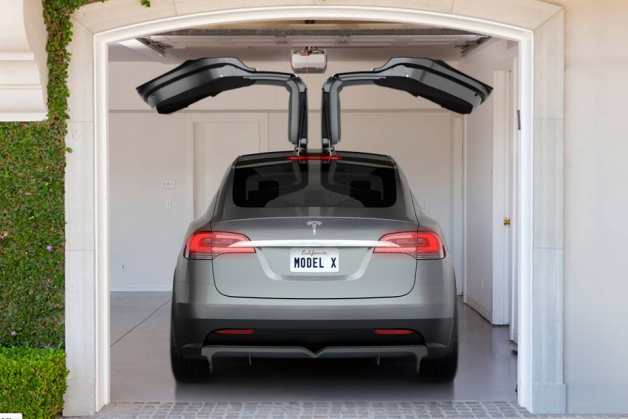
ABG: I haven't seen that car and those doors in action, but the intent is still to bring them into production?
Musk: Oh, yeah, absolutely. You should see it. It's a double-hinged gull wing – falcon door, whatever, it literaly looks like a bird of prey when the doors are open, it looks like a falcon in a dive – and the reason that works, while a regular gull wing doesn't work, is because in a regular gullwing we'd have the problem that the arc goes out too far and then too far up. But if you double-hinge it, it does this (makes a motion with his hands, similar to the video here). If you can physically fit between the next car and the Model X, like maybe a foot-and-a-half, you can open the door. In fact, you can open the door in tighter spaces than a minivan door, because a minivan door, when it opens, it's going to come out and slide. If you're trying to come at if from the back, you can't get in. You have to go past the door and then press the button and, if anyone is behind you, they can't get in.
ABG: Who's idea was the door? Was it Franz [von Holzhausen, Model S chief designer] or was it an older idea that was never used or is it a Tesla original?
Musk: The desire to have that kind of door opening is coming from me because it's important to frame the problem correctly. The problem is, how do you have a door that opens in tight spaces and is also able to access the third row without changing the seat back position of the second row. This is important because if you have a baby seat in the second row, you can't get to the third row. This is a problem I've had with all SUVs. You can't get to the damn third row. The Audi Q7 is particularly horrendous. Even in the best case scenario, you need to be dwarf mountain climber to get into the back seat. It's ridiculous. It's the most comically ridiculous third row I've ever seen. So, I wanted to be able to access the third row even if you have a child seat in the second row. I wanted to be able to step into the second row, so if you're trying to put a baby or a toddler into the child seat in the second row – right now you have to do some backbreaking thing where you have to hold the kid and cantilever yourself over the back seat. For me, it's fine, but if you're a five-foot-six woman and you weigh 130 pounds and you're trying to take your 30 or 40 pound kids and do this, it's really hard. On the other hand, if you can step into the car and put the kid down, it's much easier. There are a few ways to accomplish that. One is to do the double-hinge and the other is to do a double door, so you have part of it go down. It may have been Franz who came up with the double-hinge approach, I'm not sure, but the double-hinge one work better than the double opening. And so when I was shown the options, I said let's do that one.This is a problem I've had with all SUVs. You can't get to the damn third row. The Audi Q7 is particularly horrendous. Even in the best case scenario, you need to be dwarf mountain climber to get into the back seat.
ABG: Shifting topics to Supercharging, we've heard about this for a while. Can you talk about why you're going your own way and also the idea behind it?
Musk: The Supercharger will be available to both the 60-kWh and the 85-kWh packs. The 40-kWh pack is really designed for people who never expect to do long-distance journeys. And on the 60-kWh pack, it's offered as an option and on the 85-kWh pack it's offered as a default because, presumably, someone is buying it for potential long-distance trips. The reason for the Supercharger – we hope to do a big unveiling in late September or October, and I'll fully articulate it then – but, essentially, the other charge systems don't have enough power and in order to really charge fast, the charger needs pretty advanced technology and it needs to exactly match the pack. It's got to be hand-in-glove. So we couldn't use some generic system because it doesn't really understand our battery pack and there's a quarter as much power as we need. So we want to recharge at a rate of over 300 miles of driving per hour. That means you can stop for 30 minutes and charge almost three hours or driving.
ABG: Which is so far above what anyone else is even talking about.
Musk: Exactly. There's nothing even close. The Tesla Supercharger is on the order of 100 kW. The Leaf has like a 6 kWh, that's their high-speed charger. So we're talking about something 12 to 15 times more powerful than the Leaf's fast charge. That the approximate convenience inflection point for long-distance driving, three hours of driving for a 30-minute stop. Most people, if they time themselves, will find that's their ratio, it's three hours to 30 minutes. So, you'll start a trip at 9 am. By the time you get to noon, you want to stop and gas up, use the restroom, grab a bite to eat, grab a coffee and then go on your way. If you actually time yourself, you'll see it's about 30 minutes. People always think it's less than that, but it's not. Occasionally, somebody's a super-hardass and they want to drive for like six hours and wear diapers or something, I guess that's not our target market. So that's our target inflection point, 30 minutes of charge for three hours of driving. Over time, we're going to make that better. We'll get down to 25 minutes, 20 minutes, eventually under 20 minutes for three hours of driving.The Tesla Supercharger is on the order of 100 kW. The Leaf has like a 6 kWh. So we're talking about something 12 to 15 times more powerful.
ABG: Is that part of the excitement for you, to again be pushing what EVs can do?
Musk: That's our goal, absolutely. The fundamental good that Tesla will serve is as a catalyst for the advent of electric vehicles. We've got to address all of the concerns that people have about electric vehicles and the reason that the Model S be the world's best car – not for some ego reason – is it's got to show that an electric can can be a better car than any gasoline car. I wouldn't actually care all that much about making the best gasoline car in the world. That's, eh. But if we can make an electric car that people think is better than any gasoline car, then they'll buy it just because it's the best car and then we're way beyond people who just care about the environment. That's great, but for a lot of people, it's just not their top thing, so that's why it's very important for us to achieve that, which means our quality has got to be fantastic, our safety has got to be top of the line and we have to address the long-distance travel issue, and that's what the Supercharger is about. I certainly hope people copy us, that'd be great.If we can make an electric car that people think is better than any gasoline car, then they'll buy it just because it's the best car. Then we're way beyond people who just care about the environment.
ABG: What does the actual physical charger look like?
Musk: Well, we're going to unveil it, so I can't tell you what it's going to look like. The thing that's awesome is that the socket on the Model S that is used for home charging, that same socket can take 100 kW, which is amazing. We're designing sockets and plugs the way they should be designed. This has got to be the best power rating of any plug-socket combination in the world. But then there's the charger itself, which has a shape that's really cool.
ABG: Can you talk about any of that stuff right now?
Musk: We've had the Supercharger in testing since September of last year [2011] and it's working really well. We keep refining the technology and this is the most advanced charging device on the planet. I think it's appropriately named, recycling the term, obviously, from the gasoline world.
ABG: Where do you see the Superchagers being built?
Musk: Places where there's pretty good food available. Existing highway rest stops. So you just park, plug it in, go grab a bite to eat and a coffee and you're on your way.
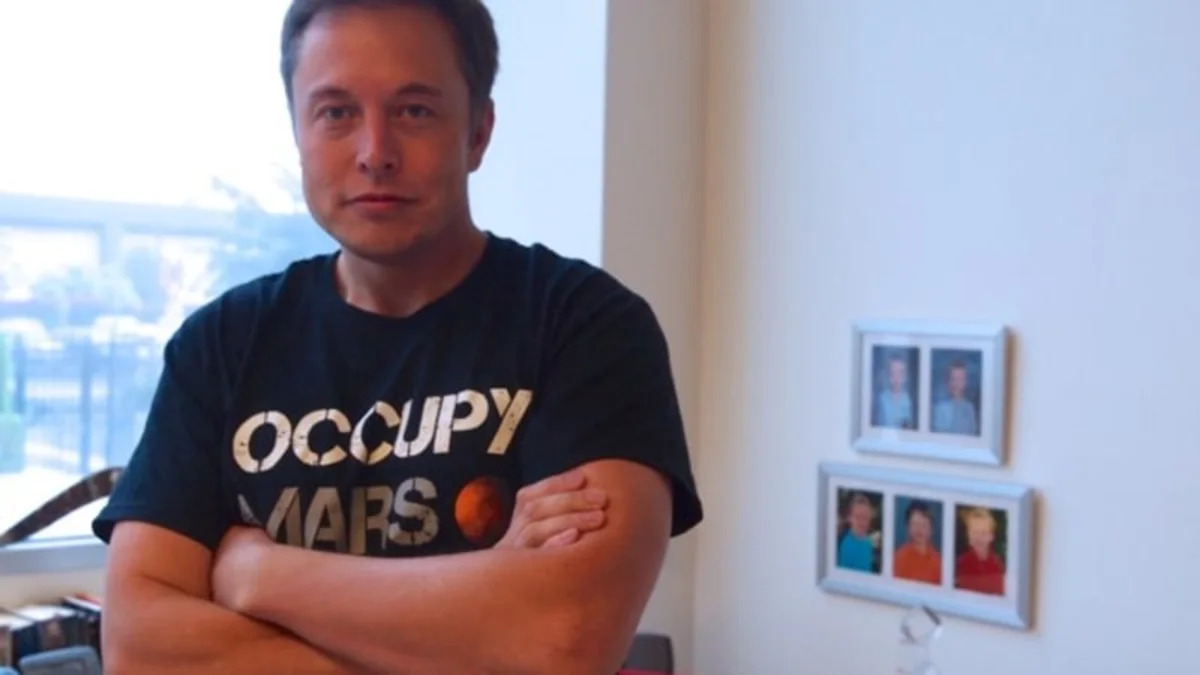

Sign in to post
Please sign in to leave a comment.
Continue